PAGE 94a – February 2010
H O T I D E A S F O R S M A L L R A I L R O A D S
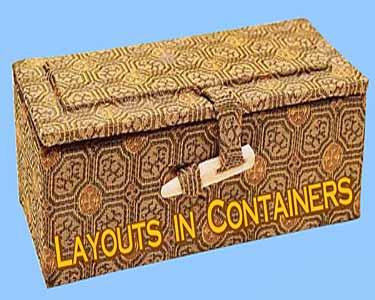
This is our annual collection of small model railroads built in containers intended for other purposes, from cookie tins to old microwave ovens. This year’s group uses fairly ordinary containers, with one amazing exception! And we’ve added a Special Feature on Literary Layouts—layouts contained in books and vice versa. Read on, all will be explained!
In This Issue
Box File Layouts
Stooperdale Engineering—A busy OO switcher
Foxbile Brewery—A tiny O-scale layout!
Brereton Green—A classic box file design
Pukwana—U.S. grainger line in a poker-chip case
Shewe Works—Interlaced dual gauge in a shoe box
LCD Screen—Working N line built in a flat-screen monitor
Layouts in Books and Vice Versa…—Examining literary layouts
BOX FILES: A CONTAINER OF CHOICE FOR MANY
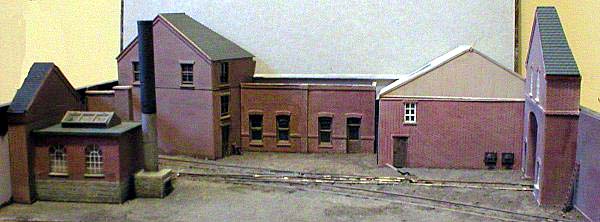
A very popular receptacle among British modelers (and perhaps continental ones as well) is the humble box file, probably because it is readily available and nicely sized for a very small layout. For my fellow Americans who, like me, may never have seen one, they are sturdy pressed-cardboard boxes with a flush lid, and when opened look like the photo at right. Outside measurements are roughly 370x265x75mm (14½x10½x3in); inside measure would be about a quarter-inch less each way. Creating a box file layout in Britain approaches the status of an art form, with some highly talented modelers having a go from time to time. We have three excellent examples here, two in OO scale (1:76 on 16.5mm gauge), and one in British O Scale (1:43.5 on 32mm/1¼in gauge). For more examples, take a peek at Scrapbooks #18, #34, #69, #72, #81a, #85a and #89a.
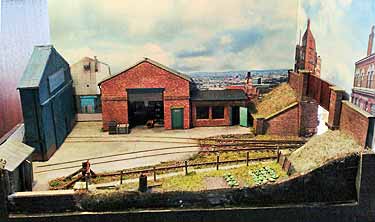
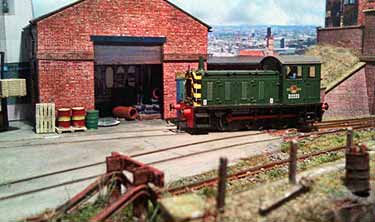
Stooperdale Engineering
Inspired by Colin Peake’s classic Layout in a Boxfile, Terry Wood-Heeds, from Bridlington, East Riding of Yorkshire, England, used the same track arrangement for his OO Gauge Stooperdale Engineering. “It can operate as a 3-2-2 Inglenook shunting puzzle,” Terry explains. “It has one point [turnout] and an off stage sector plate with option to extend one of the tracks into the building at other end. The doors of that building can slide open or shut.” Notice the feeling of “open spaces” created in this extra tiny space by very careful scenic planning… this is a mark of an excellent box file layout.
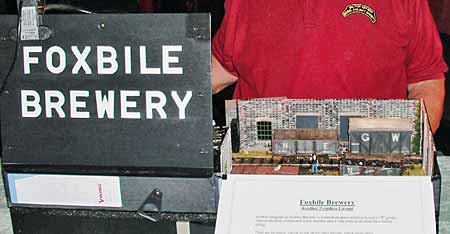
Foxbile Brewery
Foxbile (obviously an anagram) Brewery depicts a small country brewery of the 1930’s using two side-by-side box files. It was built in O scale standard gauge by Colin French, from near Ipswich in Suffolk, England. A tiny Sentinel switcher handles shunting. “Four wagons are used,” says Colin, “and the operation requires each wagon to be moved one space anti-clockwise [counterclockwise] each time a sequence is carried out.” Each sequence takes about 15 minutes. The whole layout measures 29x15in (74x38cm).
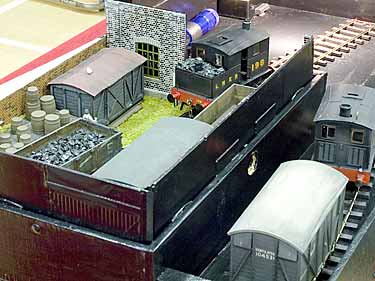
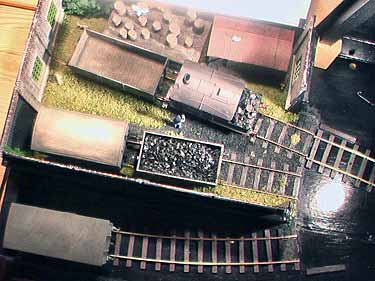
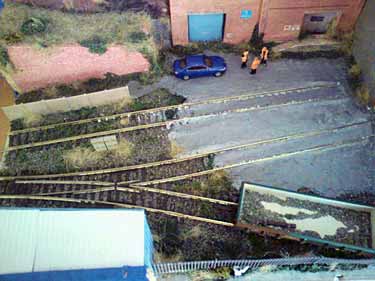
Brereton Green
In creating Brereton Green, Chris Thompson, from Crewe, Cheshire, England, focused on the “open feel” of the scenery. He felt this was necessary in order to handle movements of his fleet of EMD Class 66’s, which are 21-meter-long, six-axle diesel electric freight locomotives.
He also focused his attention on small scenic vignettes, a couple of which are shown here. By using “spare bits” of Setrack and scenic items, Chris was able to keep cost down to a minimum, producing a good looking working layout for virtually no money. The fiddle yard is simple as well… it’s just a double length of Setrack (about a foot long) that clips onto whichever track is needed!
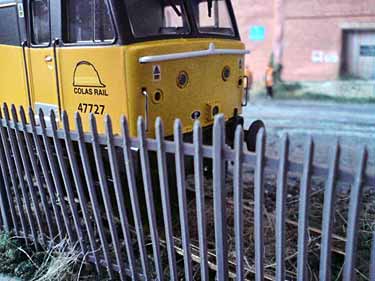
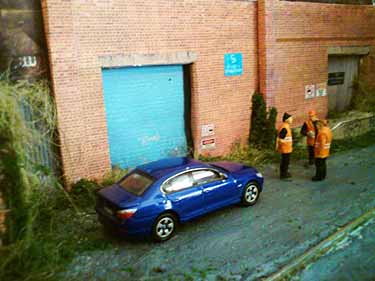
POKER CHIP CASE HOLDS A SLICE OF AMERICAN MIDWEST
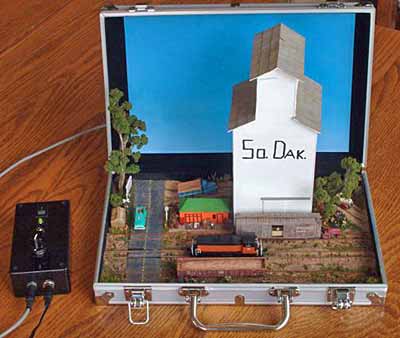
This site inspired Todd Schultz, from Reno, Nevada USA, to return to model railroading after graduating from college and moving into a small apartment (flat). He decided to try building a micro layout and chose to depict the Milwaukee Road in South Dakota during the mid-Twentieth Century. For the location he picked the SD town of Pukwana, largely because the tracks and elevator were at the extreme north edge of town, so he didn’t need to model any town structures to be realistic!
The little scene is contained in a poker chip case. A reversing circuit hidden under the grain elevator allows the locomotive to shuttle back and forth on the mainline. The next step would be to cut a gate in the side of the case and attach a traverser (transfer table) or dismountable casette to that side, equipping the layout for Inglenook style operation. More photos are here.
IMAGINATIVE DUAL-GAUGE TRACKAGE FILLS O-SCALE SHOEBOX
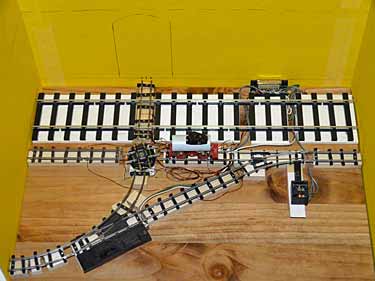
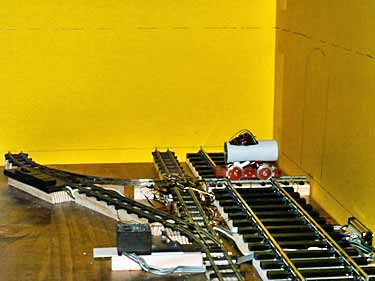
Through this site, Thorsten Sadowski, from Berlin, Germany, became inspired by the International Shoebox Challenge sponsored in 2008 by the Railroad-Line Forums’ Micro & Mini Layouts Section. Though the challenge has long been finished, Thorsten decided to build a 13x9x5in layout that meets the challenge specs. Searching for the largest possible scale to use, he hit upon O9/On18, representing 18-inch gauge operations in O scale (1:45 on 9mm gauge).
Thus was born Shewe, a representation of the Crewe Locomotive Works tramway system operated from 1862 to the 1980s inside the LNWR (later LMS and then BR) locomotive works at Crewe, Cheshire, England. Thorsten’s mesmerizing dual gauge (32mm and 9mm) track arrangement is pictured here, including the in-progress state of a Ramsbottom locomotive he’s building.
Scenery plans? According to Thorsten, “Originally I planned a brick wall at the back with painted sides looking as if the wall would continue to both sides. But this would require a fixed viewing position [to be realistic]. My current plan is an arch to hide the right side and another wall at the left side with buffer stops. It would be possible to have a fiddle yard through the door at the back and another through the arch at the right.” The narrow-gauge turntable, based on an Egger-Bahn crossing, is motorized with a 2½in hard disk spindle motor. Stay tuned for further developments!
YOU’VE SEEN LAYOUTS IN COMPUTER MONITORS BEFORE, BUT…
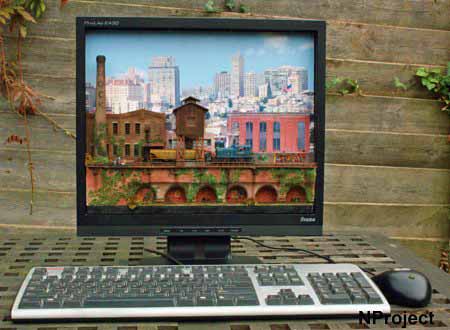
From the Netherlands, Martin Boogaard writes, “When my son, Kevin, and I display our N-scale layout built in a computer CRT terminal, we often get the comment, ‘That’s great, but you’ll never be able to do it in an LCD screen monitor’ (called a TFT screen in Dutch). Well, yes we can!”

Here’s the plan view of the Boogaards’ The Rock & Co. Supplies, a 34x3cm working N-scale line built in a discarded LCD screen housing! The setting is Chicago USA in 1995, on the last day of the switching line that has served the “Rock” for 50 years. It’s sunset for the little line, and the layout includes LED lighting to change from daylight to a night scene. It also includes sound effects, and the keyboard and mouse lights are also functional and change when the locomotive changes its direction.
You can find more information and photographs of how they did it on the duo’s website.
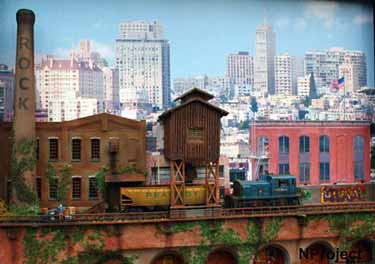
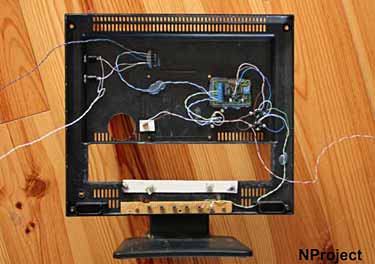

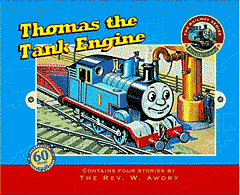
There are lots of model layouts contained in books… and not a few books that are also contained in model layouts! Here are a few examples starting with the revered Thomas the Tank Engine books by Rev. W. V. Awdry. Thomas began as a wooden toy for his son. The books inspired films and TV (showing model layouts) and private lines around the world.

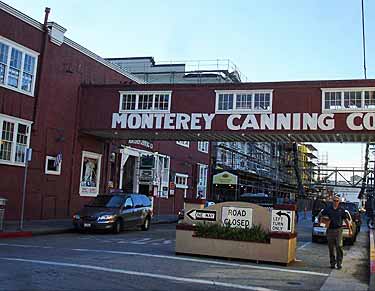
A good many layouts have been built around (and thus “contain”) well-known books. (Left, above) For example, Gerry Snelson, from Frostburg, Maryland USA, based A Dickens Pizza on several of Charles Dickens’ novels set in 19th Century London, using Victorian locomotives and rolling stock. Voted among readers’ Top Favorite Layouts of 2009, this charming period piece is described at Scrapbook #84a.
(Right, above) John Steinbeck’s novel, Cannery Row, is set in 20th Century Depression American at Monterey, California (photo shows modern appearance). Craig Jenne, from San Francisco, California USA, designed a fine HO micro layout depicting a current-day rail-served Cannery Row (quoting Steinbeck for atmosphere), and Shortliner Jack Trollope added some ingenious extra trackage to increase operating capability in Scrapbook #81.
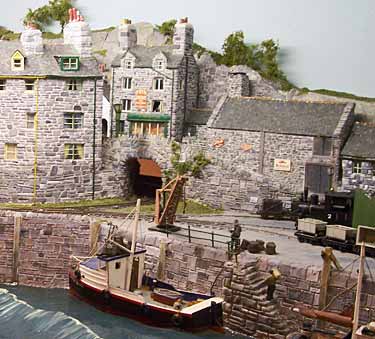
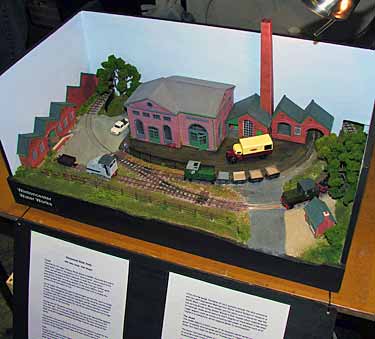
(Left, above) Poet Dylan Thomas’s radio play, Under Milk Wood, depicts the life of a small fishing village in Wales. During the 1970s, the imaginary town was recreated in OO9 scale by Dave Rowe and named Llareggub. Dave captured the slaty feel of the prototype and even named the shops after appropriate characters in the play. Currently this classic layout has been restored and exhibited by John Forman and Gareth Houghton.
(Right, above) Wintoncester Water Works represents a typical English narrow-gauge water works railway… but this one is set in Upper Wessex (as found in the novels of Thomas Hardy) and is one of several English layouts based in Hardy country. Patrick Collins, from Romsey, Hampshire, England, modeled his OO9 line after another water works layout he found on this site.
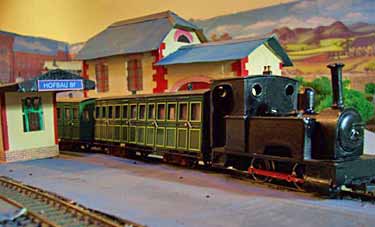
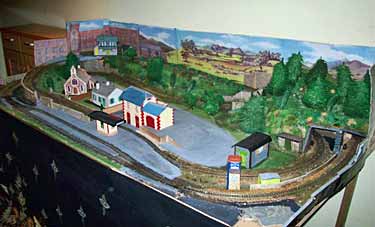
(Above) A new layout to these pages is Hofbau, set in Ruritania, a mythical kingdom in central Europe, “halfway between Dresden and Prague,” the venue for The Prisoner of Zenda and two sequel novels by Anthony Hope. The layout photos come to us from James Corsi, who lives and works in Wuhan, Hubei, China.
Measuring 200x100cm (79x39in), the twice-around O-16.5/On30 layout shows the rural station of Hofbau, somewhere not too far from the capital city of Strelsau. Needless to say, James is a big fan of hipped-roof architecture and Mitropa restaurant cars! The train shown is an English outline placeholder, awaiting arrival of appropriate Central European rolling stock. Meantime, keep a sharp eye out for Ronald Colman or James Mason around the station!
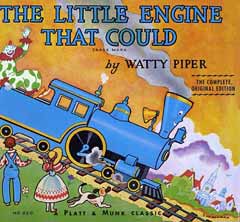
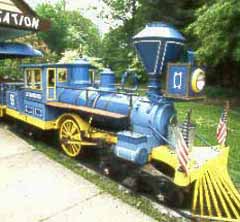

Finally, there’s a small collection of books that (more or less) feature model railways in their contents. The two best we can find include The Little Engine That Could (upper left), by Watty Piper (a publishing house pseudonym). This familiar children’s story is generally illustrated with a locomotive drawn from the C.P. Huntington, a 4-2-4T locomotive that was No. 1 of the U.S. Southern Pacific Railroad. Its popular outline was used by Chance Industries for miniature ride-on park trains … probably the most popular single park locomotive in America. From there, it was picked up as a model for the book illustration. Shown (center) is an example from the Pittsburgh Zoo Railway.
In the early chapters of Anna Karenina (upper right), by Leo Tolstoy, two children are seen briefly playing with wooden boxes that represent a locomotive and a passenger carriage—a toy train. This scene presages the tragic ending of the novel, where Anna dies under a train. It could be called the most important plot use in literature of model railroading as a metaphor.
Wistfully, we also list a couple books that would make wonderful model railroad inspiration… and encourage readers to think about them! First, Agatha Christie’s Murder on the Orient Express (lower left) is the quintessential “glamourous train” novel. Hercule Poirot unravels a spectacularly complex knot of clues while the Orient Express is stalled in a heavy Alpine snowstorm. It might have to be a diorama, since the train does not move during the main action of the book, but it would be a great modeling project!
Another children’s book which has possibilities for modeling is the Paddington Bear series about a “polite immigrant bear from Darkest Peru, with his old hat, battered suitcase, duffle coat and love of marmalade sandwiches” (lower center). He was found in Paddington Station, London, wearing a tag that read, “Please look after this bear.” There is a statue of him in the station (lower right). Just a thought for consideration.
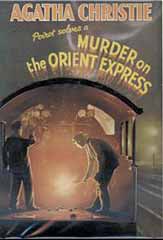
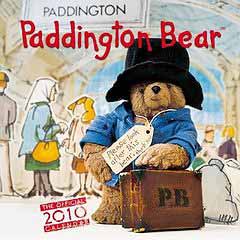
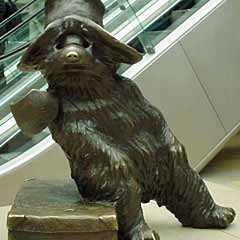
We welcome ideas, doodles, track plans, and even layout photos of literary model railroads of any description. Full credit will be given, and we’ll periodically revisit this interesting subject area!
Leave a Reply